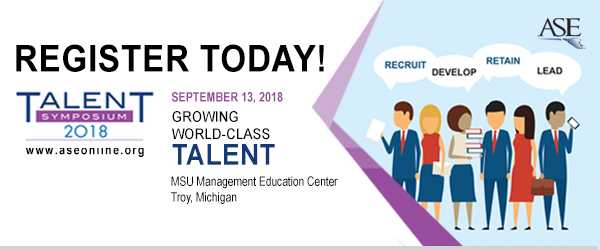A recent study by Korn Ferry revealed that if not addressed, the skilled talent shortages could have significant impact on global economics by 2030.
 Korn Ferry’s Global Talent Crunch study estimates the gap between future talent supply and demand in 20 major economies at three milestones: 2020, 2025 and 2030, and across three sectors: financial and business services; technology, media and telecommunications (TMT); and manufacturing. The study found that if not addressed, this shortage will create 85.2 million unfilled jobs and nearly $8.5 trillion in unrealized revenue worldwide.
Korn Ferry’s Global Talent Crunch study estimates the gap between future talent supply and demand in 20 major economies at three milestones: 2020, 2025 and 2030, and across three sectors: financial and business services; technology, media and telecommunications (TMT); and manufacturing. The study found that if not addressed, this shortage will create 85.2 million unfilled jobs and nearly $8.5 trillion in unrealized revenue worldwide.
“The world can’t afford to have tens of millions of unfilled jobs and trillions of dollars in unrealized revenue,” said Alan Guarino, vice chairman, Korn Ferry CEO and Board Services. “Companies must work to mitigate this potential talent crisis now to protect their future. If nothing is done, this shortage will debilitate the growth of key global markets and sectors.”
The talent shortage crisis could undermine market dominance within the following sectors:
- Labor shortages in financial and business services are the most severe with a potential deficit of 10.7 million workers globally by 2030, which could cause the sector to lose out on annual revenues of $1.3 trillion.
- Technological advancement across all sectors of the economy could be hindered by an acute global labor shortage of 4.3 million TMT workers by 2030.
- Manufacturing is facing a talent deficit crisis of 7.9 million workers globally by 2030, despite being the only sector with a surplus of highly skilled workers in 2020.
The study also revealed a significant mismatch between the supply of available workers and business demand:
- Developed markets will be hardest hit by imminent talent shortages.
- Australia, France, Germany, Japan and the U.S. face the largest threat, with a combined opportunity cost of $1.876 trillion in annual revenues by 2020.
- The U.S. faces a critical shortage of skilled workers that is set to worsen. It could leave $1.748 trillion of annual revenue on the table by 2030 - equivalent to 6% of the country’s economy.
- India is the only economy in the study maintaining a talent surplus in 2025 and 2030.
“The right talent is the greatest competitive advantage there is for an organization - and that talent is getting scarcer every day,” said Guarino. “Our study reveals that there already isn’t enough skilled talent to go around and by 2030, organizations and economies could find themselves in the grip of a talent crisis. In the face of such acute talent shortages, workforce planning and a comprehensive understanding of the talent pipeline are critical.”
A similar study by Manpower indicates that 45% of employers globally say they can’t find the skills they need, up from 40% in 2017. Globally the hardest roles to fill are:
1. Skilled Trades
2. Sales Reps
3. Engineers
4. Technicians
5. Drivers
6. IT
7. Accounting and Finance
8. Professionals
9. Office Support
10. Manufacturing
In the U.S., the top drivers to the talent shortage include lack of applicants (26%), lack of experience (21%), lack of required hard skills (14%), lack of soft skills (7%), high pay expectations (16%), and the remaining 16% range from “other” to benefits and issues specific to the organization.
With the top two reasons revolving around skills and experience, should workforce development programs be put in place? Research by McKinsey identified five principles that they believe should be the foundation of workforce development programs:
1. Define geographic assets and identify target professions. Identify sectors with high growth potential where there are shortages or a high turnover of workers. They state the best workforce-development solutions happen when leading employers come together to address the talent problem for a specific sector. 53.4% of Detroit’s working-age residents aren’t even looking for a job due to the lack of skills, transportation, or education. It’s the lowest workforce participation rate in the nation. The city’s official unemployment rate stood at 7.4% in April, well above the Michigan rate of 4.7%.
2. Deliver ROI to employers and workers. The lack of ROI proof is why many employers are reluctant to participate in workforce programs. McKinsey’s research shows that if ROI can be proved, then employers would be willing to pay for training programs (up to 15% of the employee’s annual salary).
3. Support comprehensive, demand-driven training methods. Effective training programs are ones where the employer is involved from the start with the goal of moving the individual into a full-time position at the end of their internship or program. ASE member, Nemak, located in Southfield, has created several unique programs to help them attract talent. To support and attract technical talent as early as high school, Nemak developed the Nemak Achievers Scholarship. Through this scholarship, graduating high school seniors entering an accredited university, with a career focus in manufacturing/engineer, have an opportunity receive a scholarship towards their education and to complete a paid internship at Nemak every summer of their college career. Nemak also developed a co-op program and their Nemak Graduate Rotational Program, where a graduate engineer rotates through various departments. The goal after the 12-18 months program completion is for graduate engineers to enter Nemak through a full-time position. “One of the top challenges to achieving business growth plans is the availability of skilled talent. The emphasis we are placing on and the benefits Nemak is deriving from our early talent programs will help us meet this key challenge. We know that early talent can bring new perspectives and new innovative approaches. These early talent programs will ensure we continue attracting and developing the right talent to continue being a leader in the advancement of sustainable mobility”, stated Denise Dorigo Jones, Human Resources Director USA/CAN, Nemak.
4. Assess and prepare learners before they start training. To better ensure success, be sure the learners fully understand what they are training for and meet any perquisites (such as high school diploma.) A good way to achieve this is to offer “a day in the life” with current workers. Programs like this result is higher program completion rates and better job placement and retention.
5. Coordinate the workforce-development process centrally. When these programs are done at the federal or state level, multiple services must be involved for success. Areas to be integrated include: workforce department, social services for child care and food assistance, and local organizations or non-profits for mentorship support.
With the current lack of skills and low unemployment rates, perhaps it is time to start training unskilled workers who are currently not seeking work due to their lack of skills that jobs require. As Diane Antishin, vice president and chief diversity officer for DTW Energy stated in the Detroit Free Press, “Over 50% of our workforce is eligible to retire here in the next five years. We see this huge bow wave of retirements coming at us. The question becomes how can we help some of those people who are experiencing barriers to employment find their way into these great family-sustaining jobs?"
Additional ASE Resources
Talent Symposium – The 4th annual Talent Symposium will take place September 13th at the MSU Management Education Center in Troy. This is a great chance to network with peers, discuss talent issues, and hear sessions on apprenticeship programs, hiring neurodiverse workers, developing internal talent, developing strong leaders, the lack of talent, and more. For more information or to register visit https://www.aseonline.org/Conferences-Events/Talent-Symposium.

Sources: freep.com, mckinsey.com, go.manpowergroup.com, kornferry.com